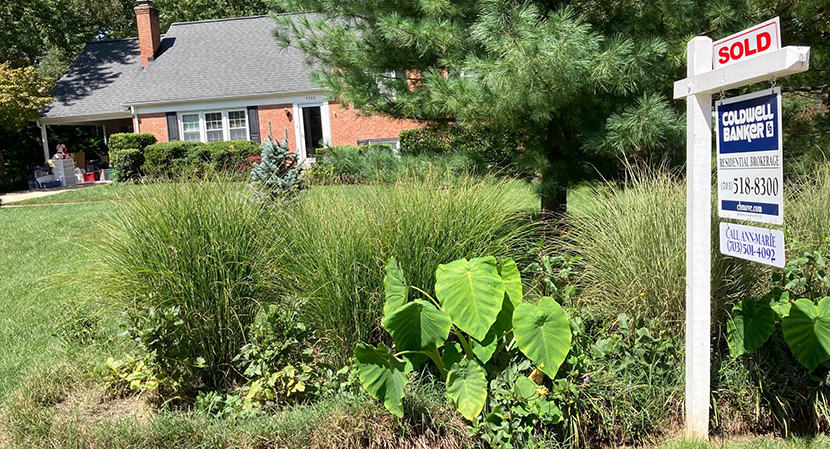
Existing Home Sales Fall for 4th Straight Month

Existing home sales fell for the fourth straight month in May, the National Association of Realtors reported Tuesday, as rising prices and low inventories continue to stymie momentum.
The report said May existing home sales fell by 0.9% from April to a seasonally adjusted annual rate of 5.80 million in May. However, sales in total climbed year-over-year, up 44.6% from a year ago (4.01 million). Single-family home sales dropped to a seasonally adjusted annual rate of 5.08 million in May, down 1.0% from 5.13 million in April, but up 39.2% from one year ago. The median existing single-family home price rose to $356,600 in May, up 24.4% from a year ago.
Existing condominium and co-op sales unchanged at a seasonally adjusted annual rate of 720,000 units in May, but jumped by 100.0% from one year ago. The median existing condo price rose to $306,000 in May, an annual increase of 21.5%.
For the second straight month, only the Midwest experienced higher sales from the prior month. Sales there rose by 1.6% to an annual rate of 1,310,000 in May and increased by 27.2% from a year ago. The median price in the Midwest rose to $268,500, an 18.1% increase from May 2020.
Sales in the South fell by 0.4 to annual rate of 2,590,000 in May, but improved by 47.2% from a year ago. The median price in the South rose to $299,400, a 22.6% jump from one year ago. Sales in the West fell by 4.1% to an annual rate of 1,180,000 in May, but improved by 61.6% from a year ago. The median price in the West jumped to $505,600, up 24.3% from a year ago. Sales in the Northeast fell by 1.4% in May, but the annual rate of 720,000 is a 46.9% jump from a year ago. The median price in the Northeast rose to $384,300, up 17.1% from a year ago.
“Existing home sales continue to be weighed down by rising prices and low inventory,” said Joel Kan, Associate Vice President of Economic and Industry Forecasting with the Mortgage Bankers Association. “Sales in May fell for the fourth straight month to the slowest annual pace since June 2020. However, housing demand is still very strong. Even with this declining trend, sales last month were still much higher than in May 2019.
Kan noted the median sales price, at $350,300 is substantially higher than in 2020 ($295,000) and just under $270,000 in 2019. “One positive development was the 7 percent increase in for-sale inventory, which should slightly help price conditions,” he said. “However, the stagnating first-time buyer share at 31 percent, along with the rapidly increasing median sales price, are signs that affordability is an ongoing challenge at the lower end of the market.”
“Existing home sales have declined during each of the past four months but are still running at a very strong pace and modestly above their pre-pandemic level,” said Mark Vitner, Senior Economist with Wells Fargo Economics, Charlotte, N.C. “The historic run-up in prices and dearth of homes available for sale has undoubtedly caused many would-be buyers to put their plans on hold. With affordability becoming increasingly challenging, several surveys have detected a pullback in home buying plans.”
Vitner said the decline in sales was widely expected and follows a drop during each of the prior three months. “Apparently, many potential home buyers are reassessing the immediacy of buying a first home or upgrading or downsizing from their current home,” he said. “Like so many other areas of the post-pandemic economy, supply side issues are the primary disruptive influence on the housing market, with the persistence of near record low inventories of existing homes contributing to the record run-up in home prices. Rising home prices cut both ways. They increase buyer power for existing homeowners and making homeownership more attractive relative to renting but also price out many first-time buyers, which is where most of the growth in housing demand is coming from. Ultimately, we expect higher prices to bring out more sellers, which should allow price appreciation to moderate during the second half of this year.”
NAR Chief Economist said home sales are now approaching pre-pandemic activity. “Lack of inventory continues to be the overwhelming factor holding back home sales, but falling affordability is simply squeezing some first-time buyers out of the market,” he said. “The market’s outlook, however, is encouraging. Supply is expected to improve, which will give buyers more options and help tamp down record-high asking prices for existing homes.”
NAR said the median existing home price for all housing types in May jumped to $350,300, up 23.6% from a year ago ($283,500), as every region registered price increases. This is a record high and marks 111 straight months of year-over-year gains since March 2012. Total housing inventory at the end of May rose to to 1.23 million units, up 7.0% from April’s inventory but down 20.6% from one year ago (1.55 million). Unsold inventory sits at a 2.5-month supply at the present sales pace, marginally up from April’s 2.4-month supply but down from 4.6-months in May 2020.
The report said properties typically remained on the market for 17 days in May, unchanged from April and down from 26 days in May 2020. Eighty-nine percent of the homes sold in May were on the market for less than a month.
First-time buyers were responsible for 31% of sales in May, unchanged from April but down from 34% a year ago. Individual investors or second-home buyers purchased 17% of homes in May, unchanged from April and up from 14% a year ago. All-cash sales accounted for 23% of transactions in May, down from 25% in April and up from 17% a year ago.
Distressed sales represented less than 1% of sales in May, unchanged from April but down from 3% a year ago.
